Abstract
The transformation of three monocyclic terpenes by three soil microorganisms have been studied. The organisms were isolated on, and grew rapidly in, mineral salts medium containing the appropriate terpene substrates as sole carbon sources. These organisms belong to the class Fungi Imperfecti, and two of them have been tentatively identified as Cladosporium species. A Cladosporium species designated T1 was isolated from terpene-soaked soil, using 1-menthene as the sole source of carbon. The major catabolic product isolated from the growth medium of this organism was found to be a cyclic 1,2-diol identified as trans-p-methane-1,2-diol. A similar but biochemically distinct Cladosporium sp. designated T7 was isolated on D-limonene. After growth, the medium of this organism contained 1.5 g/liter of the analogous product, trans-limonene-1,2-diol. Minor quantities of the corresponding cis-1,2-diol were also isolated. The third organism, designated as laboratory culture T8, was isolated on 3-menthene and yielded a diol identified as trans-p-menthane-3,4-diol. From these results it is concluded that the formation of diols is a common intermediate in the fungal metabolism of monocyclic terpenes.
Full text
PDF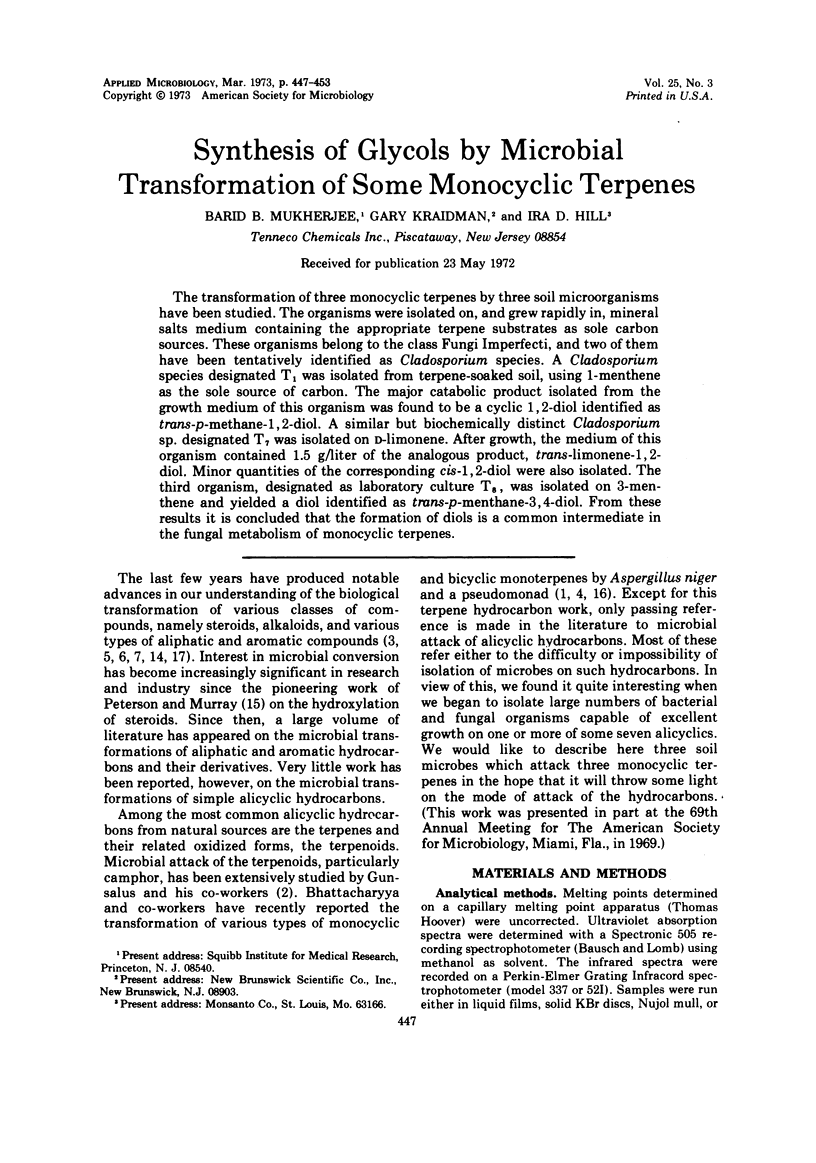
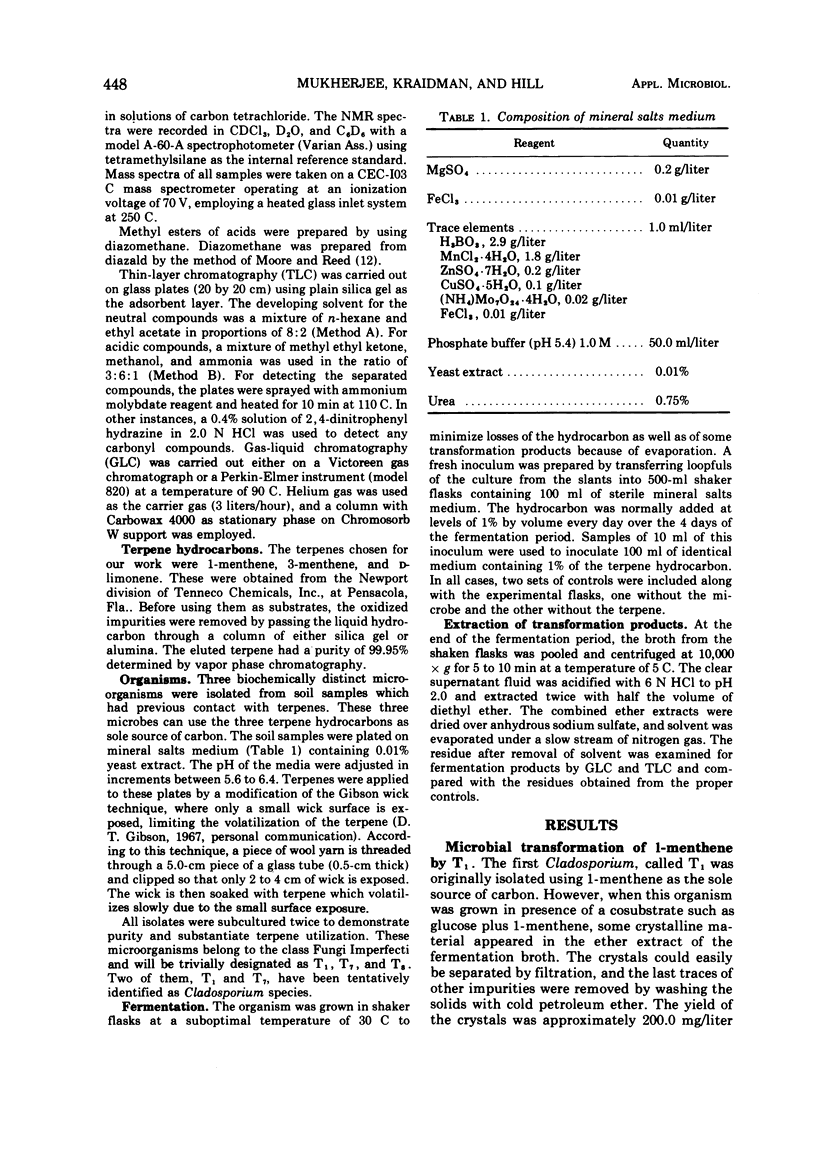
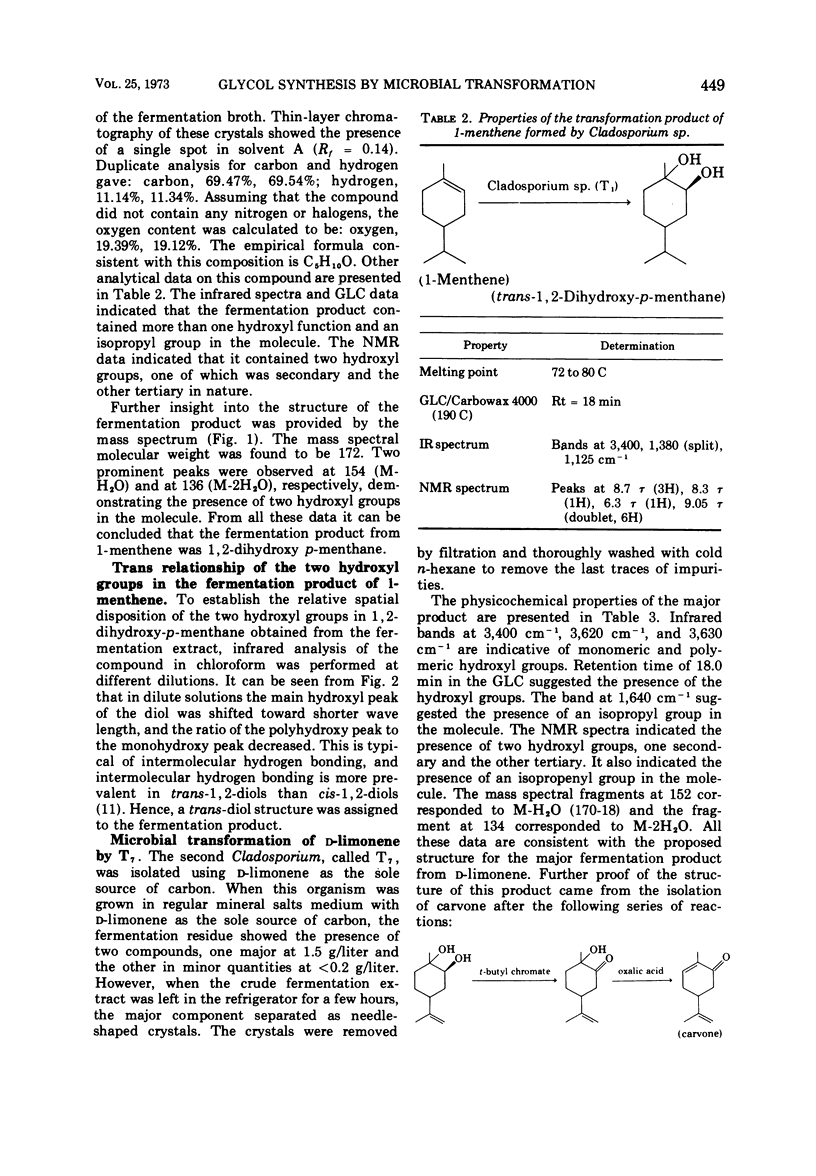
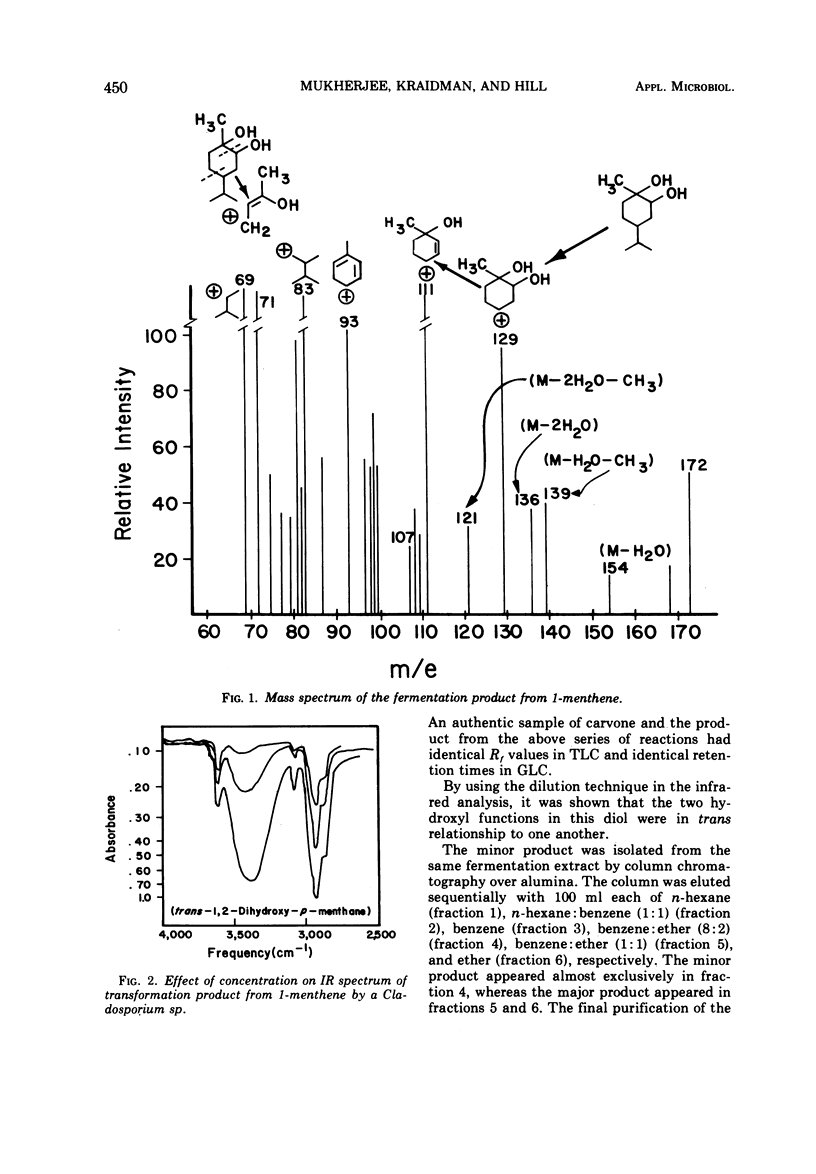
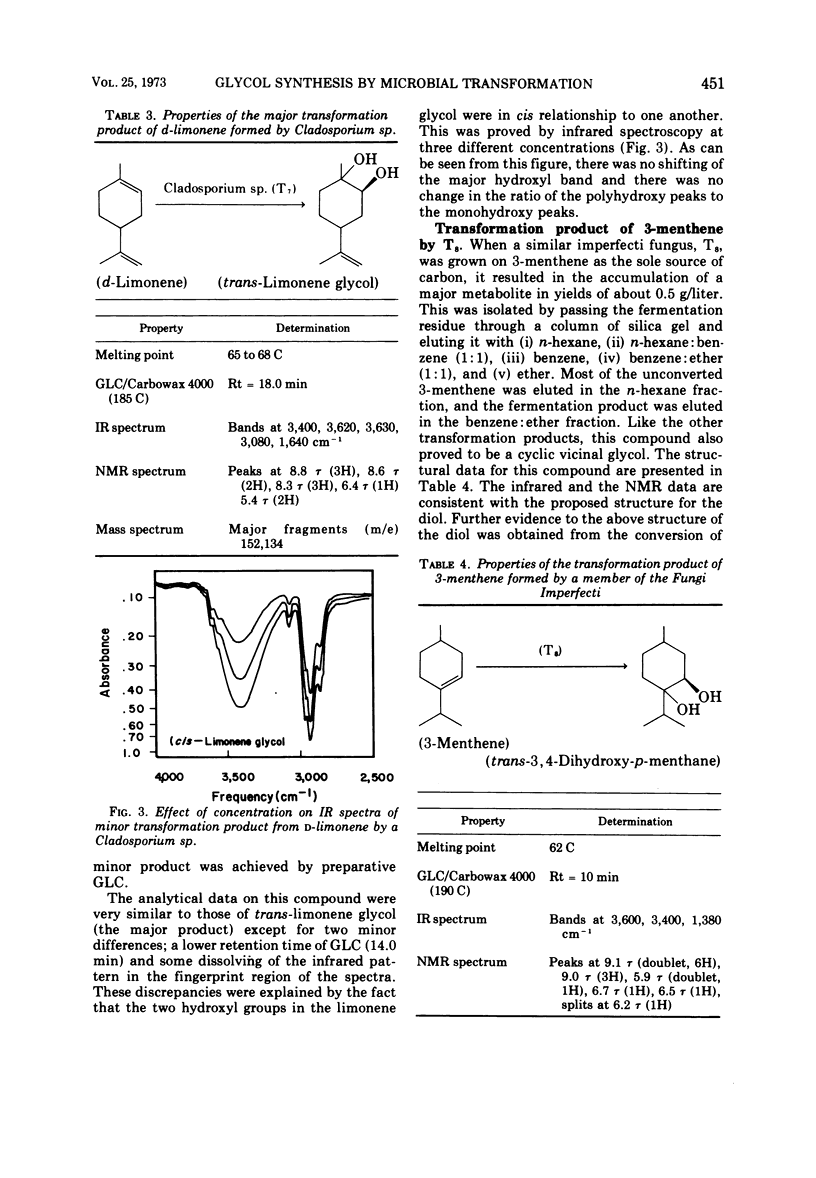
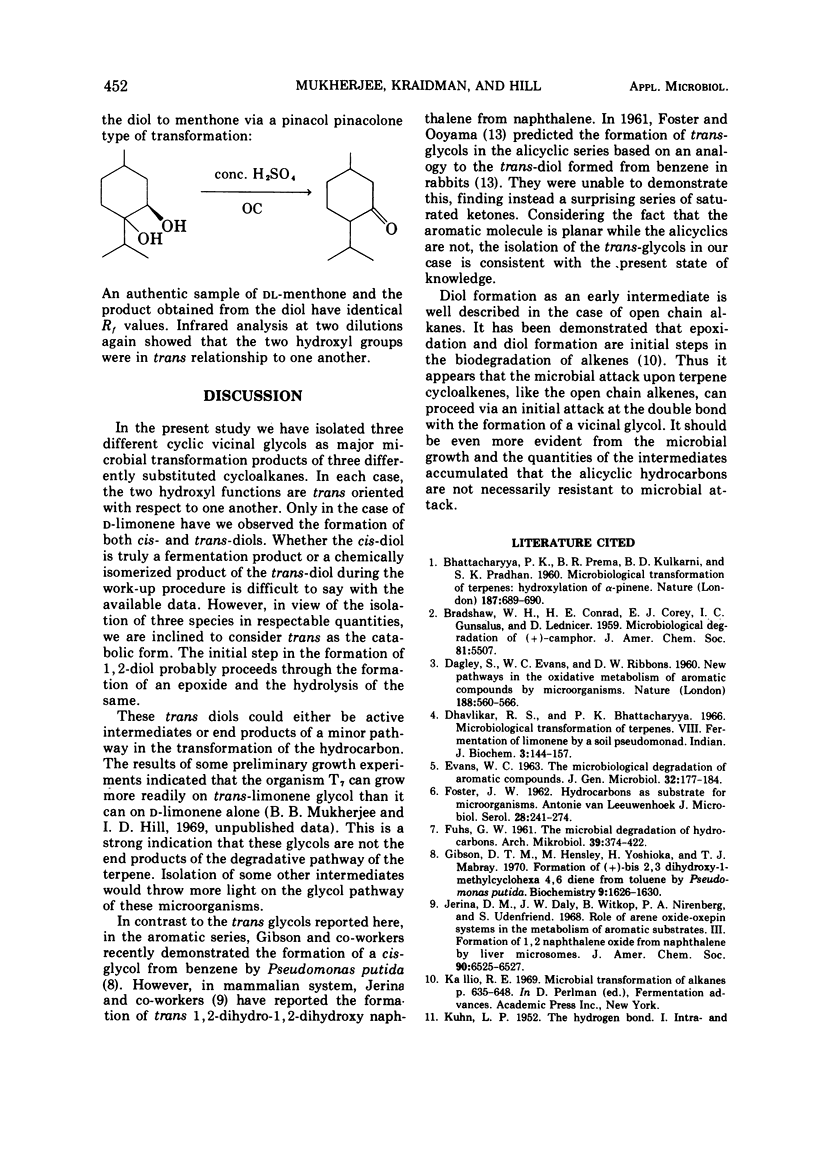
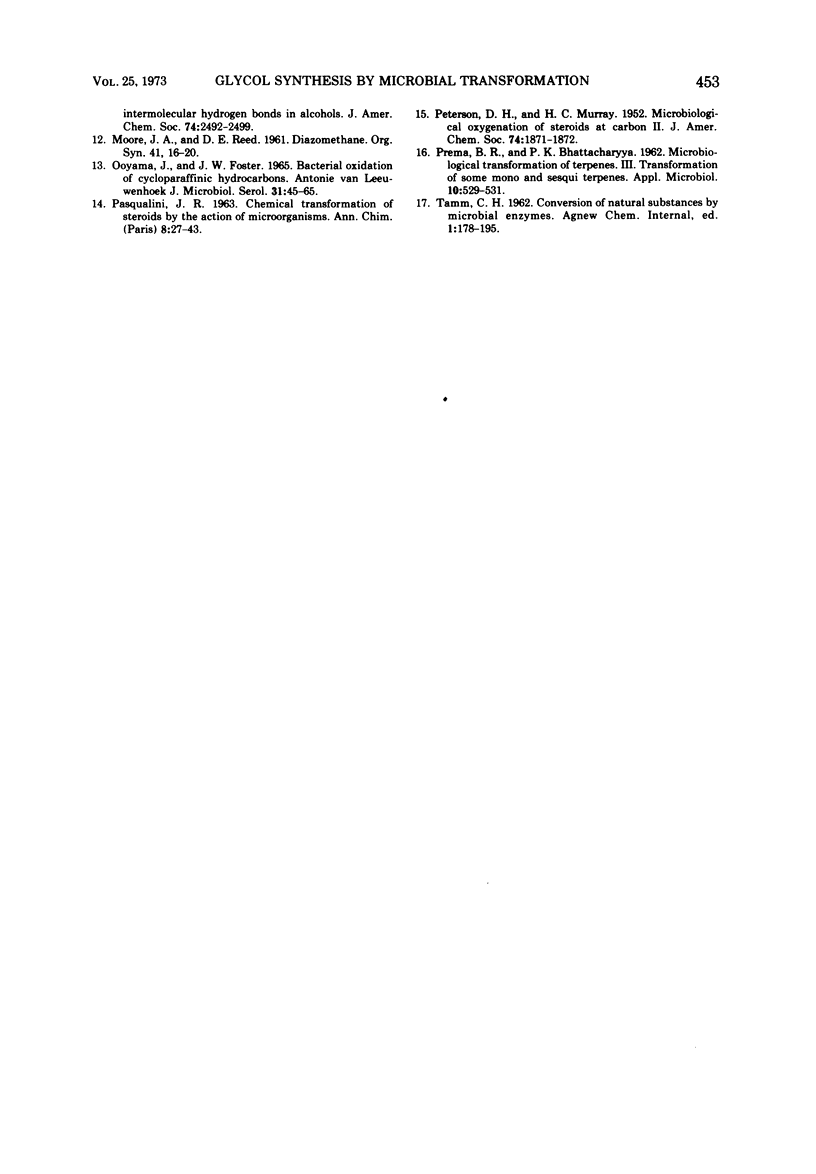
Selected References
These references are in PubMed. This may not be the complete list of references from this article.
- BHATTACHARYYA P. K., PREMA B. R., KULKARNI B. D., PRADHAN S. K. Microbiological transformation of terpenes: hydroxylation of alpha-pinene. Nature. 1960 Aug 20;187:689–690. doi: 10.1038/187689b0. [DOI] [PubMed] [Google Scholar]
- DAGLEY S., EVANS W. C., RIBBONS D. W. New pathways in the oxidative metabolism of aromatic compounds by microorganisms. Nature. 1960 Nov 12;188:560–566. doi: 10.1038/188560a0. [DOI] [PubMed] [Google Scholar]
- Dhavalikar R. S., Bhattacharyya P. K. Microbiological transformations of terpenes. 8. Fermentation of limonene by a soil pseudomonad. Indian J Biochem. 1966 Sep;3(3):144–157. [PubMed] [Google Scholar]
- EVANS W. C. THE MICROBIOLOGICAL DEGRADATION OF AROMATIC COMPOUNDS. J Gen Microbiol. 1963 Aug;32:177–184. doi: 10.1099/00221287-32-2-177. [DOI] [PubMed] [Google Scholar]
- FOSTER J. W. Hydrocarbons as substrates for microorganisms. Antonie Van Leeuwenhoek. 1962;28:241–274. doi: 10.1007/BF02538739. [DOI] [PubMed] [Google Scholar]
- FUHS G. W. [Microbial catabolism of hydrocarbons]. Arch Mikrobiol. 1961;39:374–422. [PubMed] [Google Scholar]
- Gibson D. T., Hensley M., Yoshioka H., Mabry T. J. Formation of (+)-cis-2,3-dihydroxy-1-methylcyclohexa-4,6-diene from toluene by Pseudomonas putida. Biochemistry. 1970 Mar 31;9(7):1626–1630. doi: 10.1021/bi00809a023. [DOI] [PubMed] [Google Scholar]
- Jerina D. M., Daly J. W., Witkop B., Zaltzman-Nirenberg P., Udenfriend S. The role of arene oxide-oxepin systems in the metabolism of aromatic substrates. 3. Formation of 1,2-naphthalene oxide from naphthalene by liver microsomes. J Am Chem Soc. 1968 Nov 6;90(23):6525–6527. doi: 10.1021/ja01025a058. [DOI] [PubMed] [Google Scholar]
- OOYAMA J., FOSTER J. W. BACTERIAL OXIDATION OF CYCLOPARAFFINIC HYDROCARBONS. Antonie Van Leeuwenhoek. 1965;31:45–65. doi: 10.1007/BF02045875. [DOI] [PubMed] [Google Scholar]
- PREMA B. R., BHATTACHRYYA P. K. Microbiological transformations of terpenes. III. Transformations of some mono- and sesqui-terpenes. Appl Microbiol. 1962 Nov;10:529–531. doi: 10.1128/am.10.6.529-531.1962. [DOI] [PMC free article] [PubMed] [Google Scholar]


